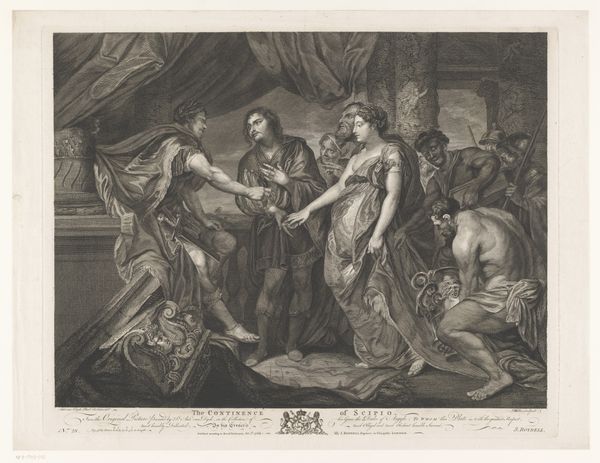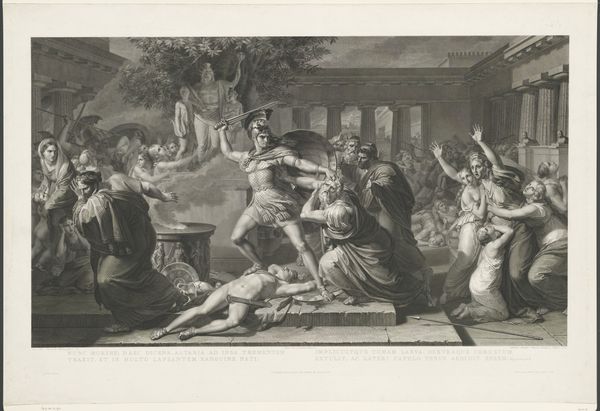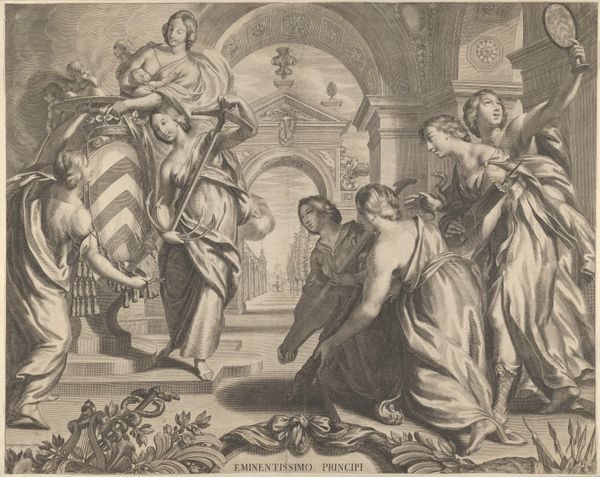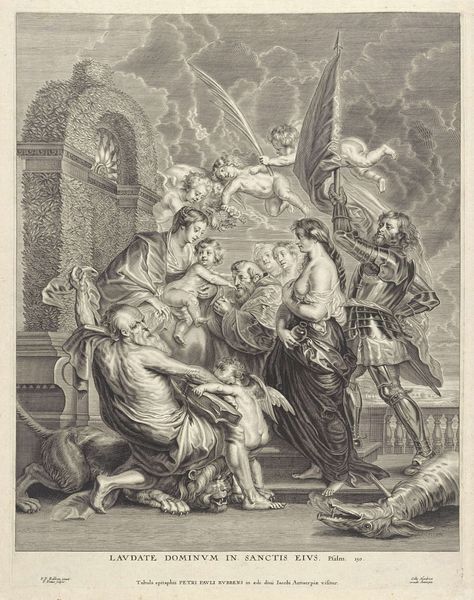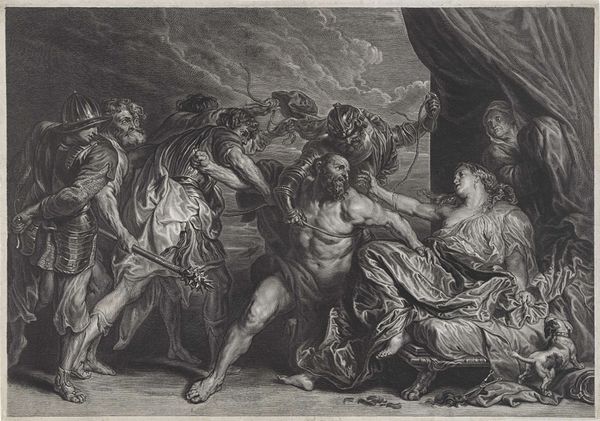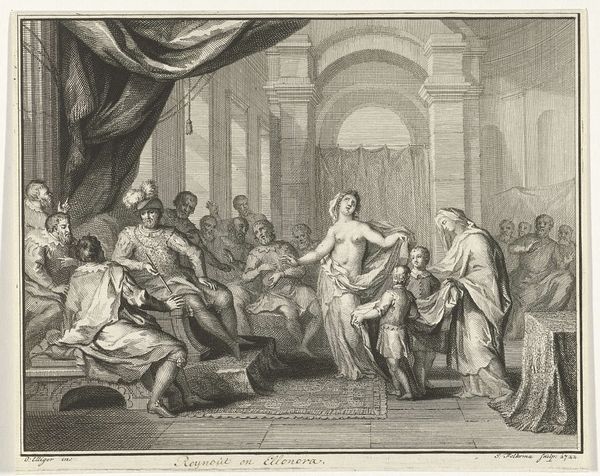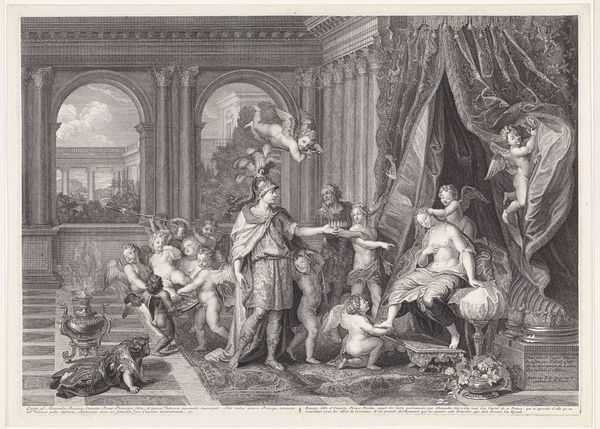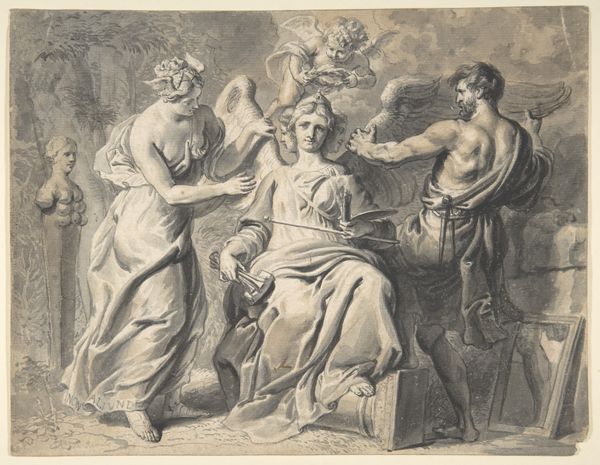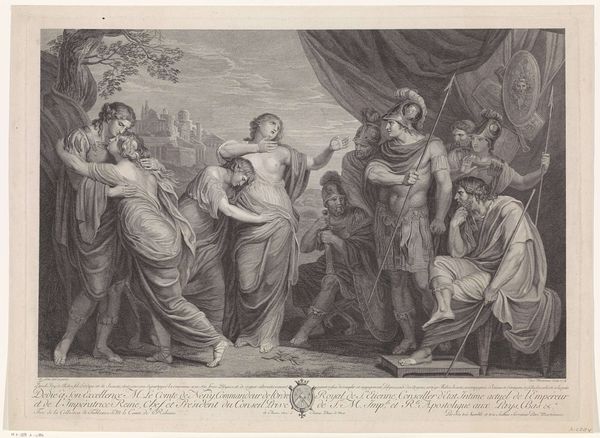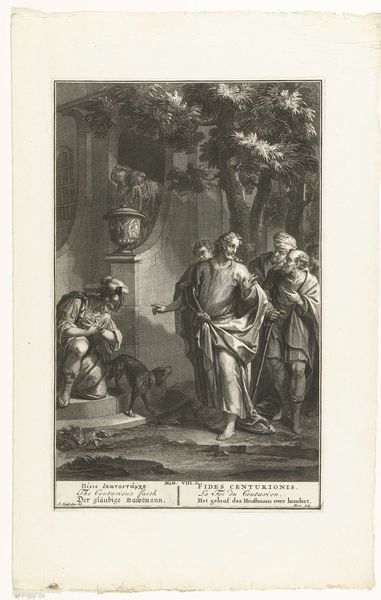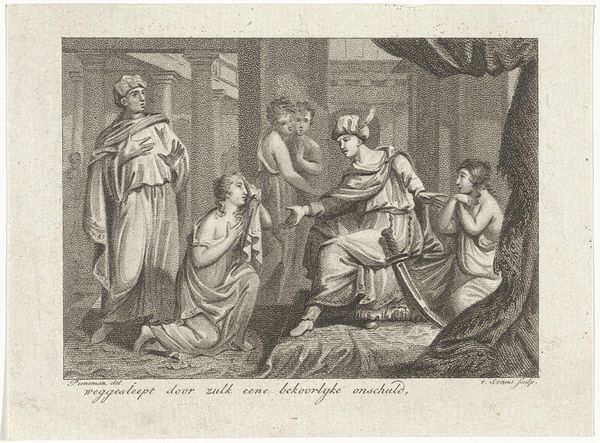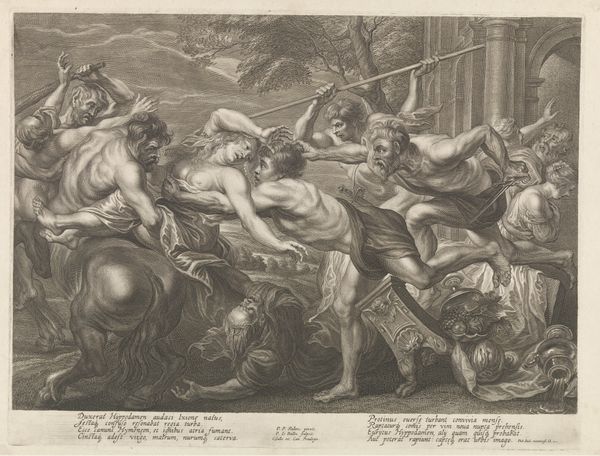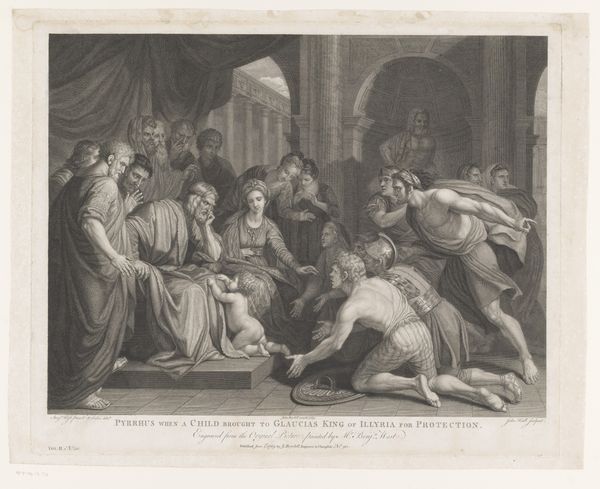
print, engraving
#
narrative-art
#
baroque
# print
#
figuration
#
history-painting
#
engraving
Dimensions: height 400 mm, width 520 mm
Copyright: Rijks Museum: Open Domain
Curator: My first impression? Stark. Even in engraving, there's a brutal immediacy that really throws me. It feels almost theatrical, operatic in its intensity. Editor: Indeed, and that drama is precisely what the Baroque style, here exemplified by Cornelis Galle I in this work at the Rijksmuseum titled 'Prokne toont Tereus het hoofd van zijn zoon Itys,' aimed to capture. Executed sometime between 1630 and 1650, this print powerfully depicts a moment of extreme, well, retribution. Curator: "Retribution" feels like an understatement. I mean, we're looking at a very literal… head on a platter. A truly shocking visual. Do you think people who made it used as a type of "cautionary tale" that served social order and deter aberrant behaviors through their gruesomeness? Editor: That's a compelling thought. Galle’s engraving visualizes Ovid’s tale of Prokne, who, to avenge her rape by her husband Tereus, serves him their son Itys as a meal. So, it’s not just retribution, but revenge so twisted it transcends simple justice and goes right for complete, symbolic devastation. Consider the audience viewing it in the context of seventeenth-century social and moral codes. The print served as an overt example of societal disruption and consequences of unchecked violence. Curator: Wow. So more than shock value, this would be intended to make a firm point in Baroque society. Editor: Absolutely. The exaggerated gestures and almost hyper-real quality were intended to elicit very strong responses, not just visually but emotionally and even morally. Prints like these disseminated tales from classical antiquity but also subtly reinforced contemporary expectations of decorum and authority. How striking is that moment he realizes exactly what he's done? The way Galle captures Tereus' expression. I would describe the style of Tereus at this moment, as someone facing the unbearable weight of consequence, something captured using light and shadow to amplify that intensity, making it difficult to look away. Curator: It's almost sickening, a spectacle designed to morally unbalance. Galle captures this with that precise composition - it forces us to confront the very essence of outrage and revenge. It's more than illustrative; it is meant to affect how societies viewed such issues, which perhaps contributes the artwork’s longevity and presence to the Rijksmuseum’s collection to this day.
Comments
No comments
Be the first to comment and join the conversation on the ultimate creative platform.
